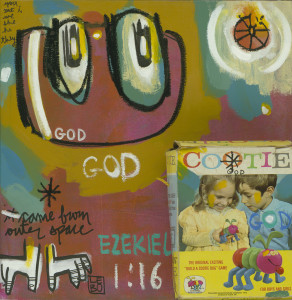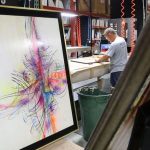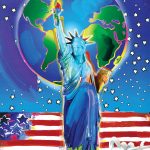Neil deGrasse Tyson – Art and Science
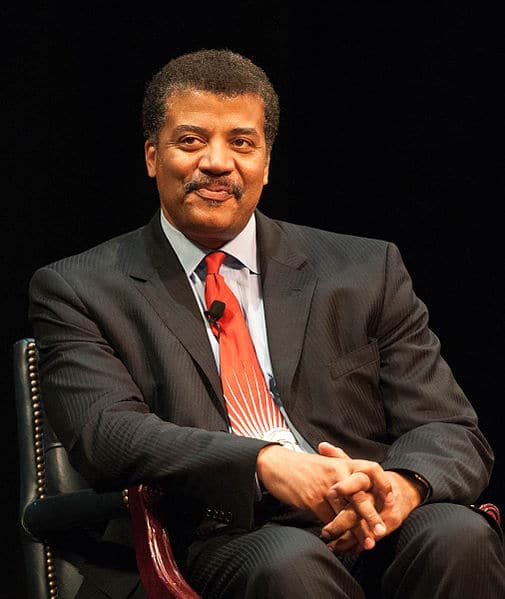
Neil deGrasse Tyson (Photo by Bruce F Press, courtesy of Wikimedia Commons)
Art and science may seem to be mutually exclusive or conflicting fields, but as scientists and Park West Gallery artists show, they provide endless inspiration for one another.
Artists are driven to create something aesthetically pleasing or find a different way of approaching an idea or object. In a similar way, scientists approach the natural world with an expectation of discovering something, and are constantly examining the world around them. Whether in a lab or studio, both seek answers to questions such as “why does it matter?”
Neil deGrasse Tyson Thinking About Art
One proponent of this school of thought is Neil deGrasse Tyson, astrophysicist and director of the Hayden Planetarium. He visited Reddit with the post “I am Neil deGrasse Tyson. An Astrophysicist. But I think about Art often,” answering questions ranging from how art and science can support one another to what type of art inspires him. His office, for instance, has a print and pillow version of Van Gogh’s “The Starry Night.”
“I want an artist to show me something I might not have noticed about that natural beauty. I want an artist to layer an emotion on that natural beauty that I might not have seen myself, or even known to access,” he wrote.
Tyson spoke about the subject during an episode of his StarTalk show. He reflects on how science has come a long way in inspiring and influencing the public, from the works of Leonardo da Vinci to science itself becoming the subject of art.
“I was impressed by how often I was called by artists to get the latest image from the Hubble Telescope, or they wanted to find out about the latest understanding of the Big Bang or black holes or Mars so they can paint a scene,” he says.
Neil deGrasse Tyson Interviews Peter Max
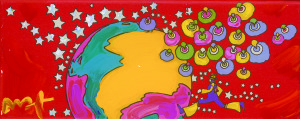
“Runner on Red Ver. I” (2008), Peter Max
To drive the point home, Tyson spoke with Park West artist Peter Max, who features cosmic themes and characters in many of his works. The pop artist says when he was 10 years old he learned about the stars and planets. Max was so amazed that he includes it in his art to this day.
“There is nothing that is nicer to be blown away by than the cosmos, the universe, these complete, unbelievable facts that exist,” Max tells Tyson. “The more you think about it, the more you dream about it, the more it starts making sense, and you still know that you are just this little, microscopic little thing in the universe thinking about all the bigness.”
The passion Max has for the cosmos is felt in his book, aptly titled, “The Universe of Peter Max,” which features a foreword written by Tyson.
Park West Artists Embracing Science
Other artists with Park West Gallery support this movement of science and art sharing the same sense of wonder. Park West artist David “Lebo” Le Batard says outer space is something he has been interested in for a long time, saying it parallels studies of the mind. He has created paintings that reference philosophy, satellites and science all at once.
“When we are studying outer space and the perceived limitations of it and the expansiveness of it, I think in the end there is a part of us that is in that and in our minds as well,” he says. “To me, that micro and macro perspective and where we lie, somewhere in between those two things, is definitely something that I never get tired of investigating.”
Dominic Pangborn creates evolutionary, abstract art, some of which is themed after cosmic imagery. In fact, Pangborn belongs to the International Association of Astronomical Artists thanks to his interpretations of space.
“I am really more interested in creating, I’m not out to copy, I want to express it in my own way,” he says about his cosmic paintings. “I want to create that look, so it’s my own point of view.”
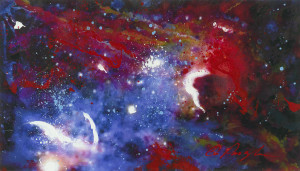
“Space” (2014), Dominic Pangborn
Like a scientist in the lab, Patrick Guyton constantly seeks new techniques with his gold and silver leafing art. He is always learning new ways to age, tarnish or oxygenate his metals, whether it’s with acids, salts or batteries.
“It really creates a lot of awesome effects,” he says. “It’s not so much that you get your canvas and you get your paints and you start making stuff – that’s all fun and well – but what has probably been the most interesting thing is experimenting with metal.”
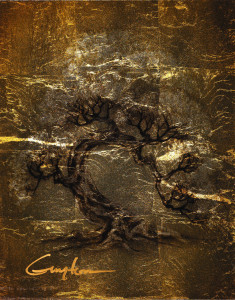
“Arbre – Petite (Gold)” (2014), Patrick Guyton
Even Park West Gallery CEO Albert Scaglione shows how science and art can combine. Scaglione worked in his cousin’s art gallery as a teenager, gaining a passion for the art world. In college, however, he studied the sciences and obtained a doctorate in mechanical engineering.
He taught as a professor at Wayne State University in Detroit, eventually working for NASA. When government funding for the program ended, he turned to his love of art and opened Park West Gallery. The combination of his fervor for art, attention to detail and work ethic helped create a gallery that has brought art to more than 1.8 million collectors worldwide.
“The defining moment was saying that this is my new career and I see blue skies and good things happening and then decided to walk away from my doctorate and 11 years in Academia,” he said in a Huffington Post interview. “I did it cold turkey, took a mortgage on my house and it worked!”

